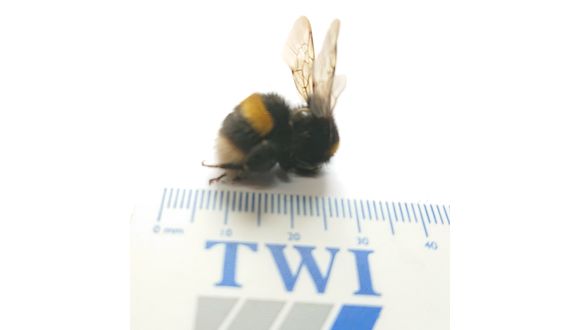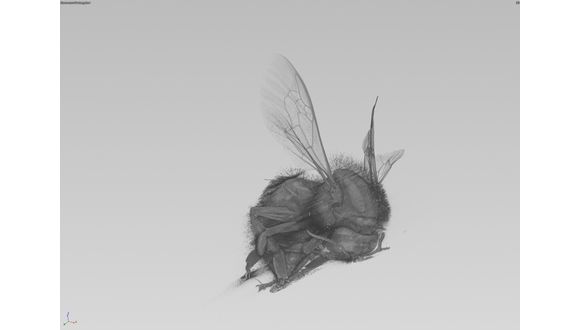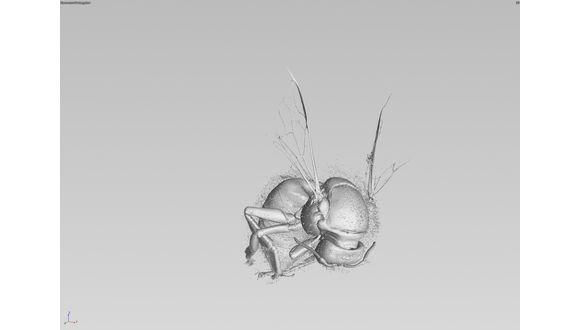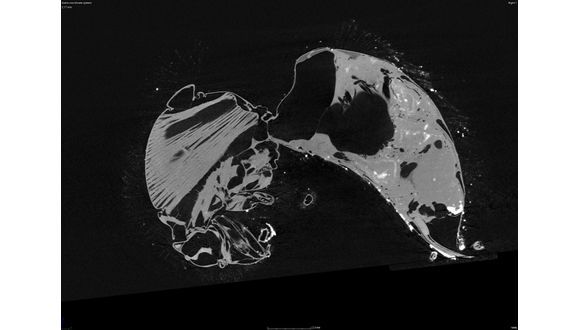Wed, 04 August, 2021
Like the rest of the UK, the location of the TWI Wales office in Port Talbot has recently been experiencing some extreme weather conditions - not only is it effecting humans but also, unfortunately, the local wildlife.
On one morning after a very hot day, when entering the radiography laboratory at the TWI Wales office, staff were surprised to see an unexpected visitor lying on the floor. This visitor was a rather large bumblebee that looked to have expired due to exhaustion, as there appeared to be no physical damage to its body.
 Figure 1. Bee with ruler
Figure 1. Bee with ruler
So, what did the radiography team do when one of our state of the art X-ray inspection systems had some downtime in-between Industrial Member jobs and a new "sample" presented itself?
They became curious and wondered how they could optimise the machine parameters, for inspecting organic parts. TWI is used to offering industrial radiography capability to our Members and X-ray computed tomography (XCT) inspection is applied routinely by TWI for all manner of materials and part geometries to provide 3D volumetric representations.
The challenge for inspecting the bumblebee was the X-ray energy. Our X-ray systems are dedicated to industrial inspection and are configured to work using higher X-ray energy to penetrate thick materials; a 200kV-400kV energy is typical and the usual challenge is not having enough X-ray energy to penetrate thick, high-density components.
Carl Forest, a Senior radiography technician, explained, "Inspecting a bumblebee posed an opposite challenge. Bumblebees are organic and therefore represent a very low material density, so you only need relatively low X-ray energies to pass through. The problem is that industrial X-ray machines are not designed to give optimal results at low energy. In the past, metallic paint has been sprayed on low-density samples to facilitate the use of higher energies. However, for organic material, this is not appropriate, as many of the internal features would be masked. For the bumblebee, low power was required to get the highest resolution within the XCT machine capability. Using 50kV, 160uA energy gave an output power of 8 watts. The low power along with an exposure time of 2 seconds produced a high-resolution X-ray image. A total of 2700 images of the bee were acquired whilst the bee was rotated through 360° and these single 2D images were reconstructed to give the resultant 3D views of the bee."
 Figure 2. Bee 3D rendered showing hair
Figure 2. Bee 3D rendered showing hair
 Figure 3. Bee 3D rendered to show outer shell with dust in hair visible
Figure 3. Bee 3D rendered to show outer shell with dust in hair visible
 Figure 4. Bee 2D side view image slice
Figure 4. Bee 2D side view image slice
While we don't usually perform XCT on bees, it is a perfect illustration of the capabilities of the state of the art equipment that is available to our Members.
You can find out more about our radiography testing services here.